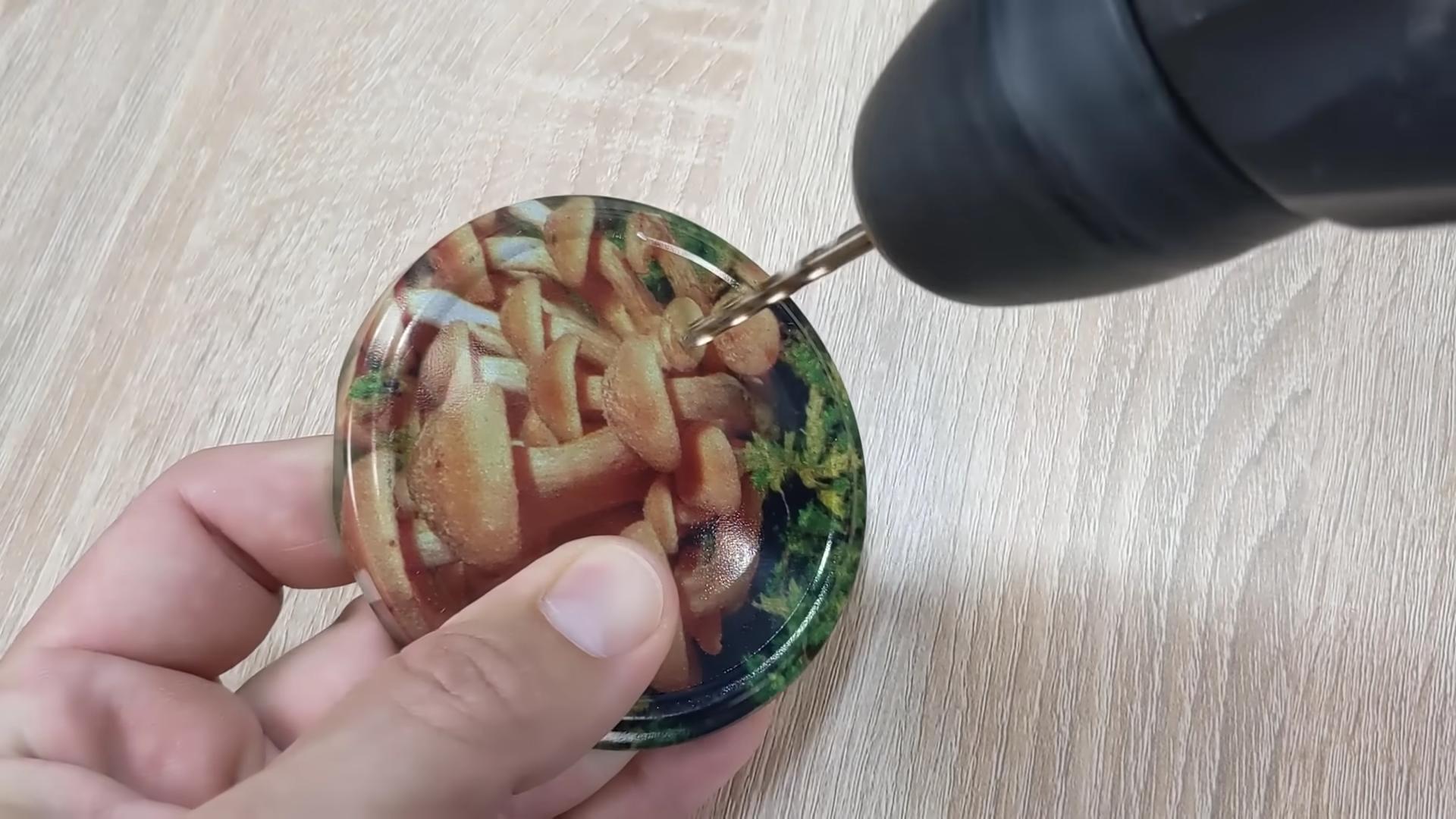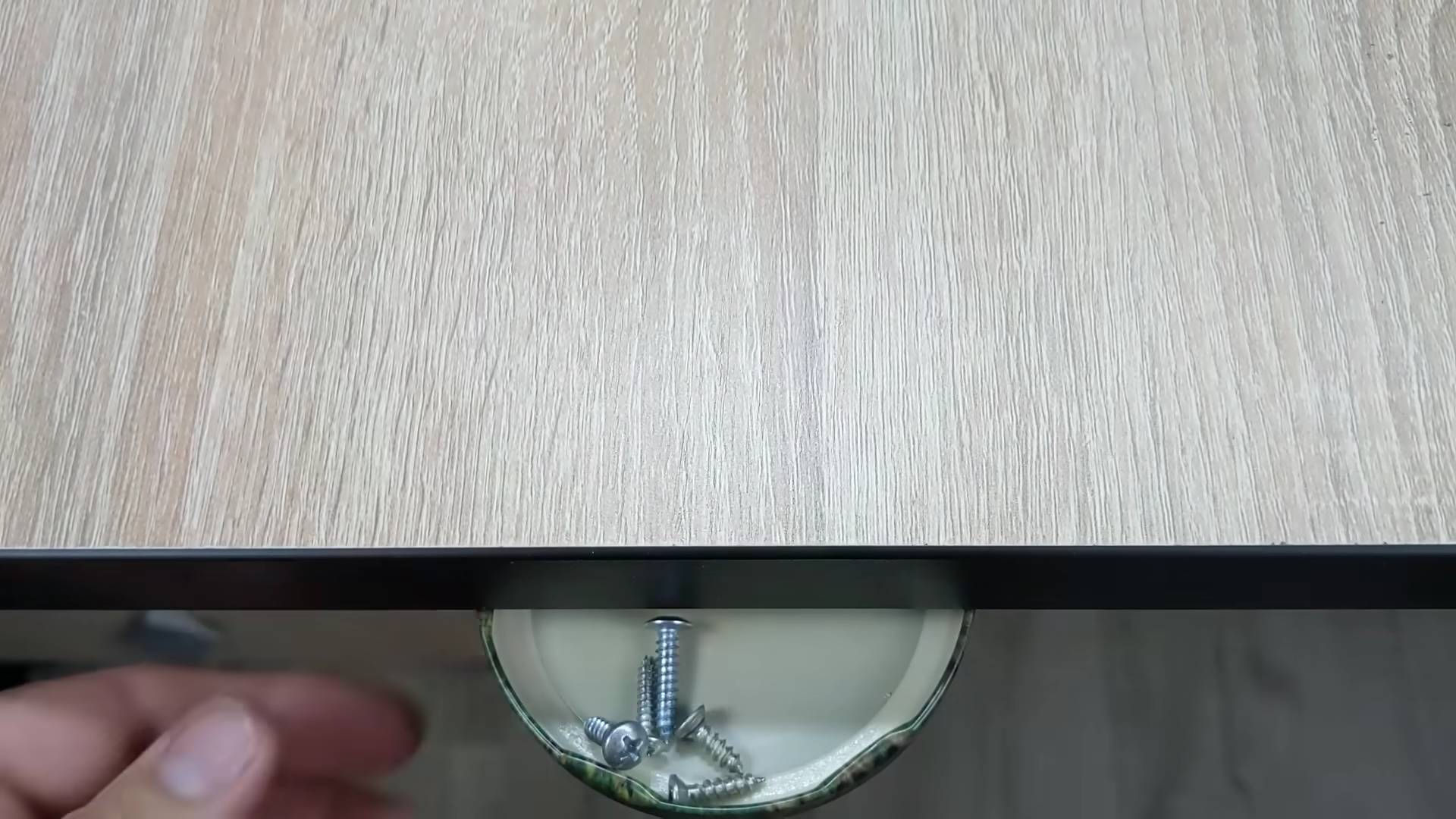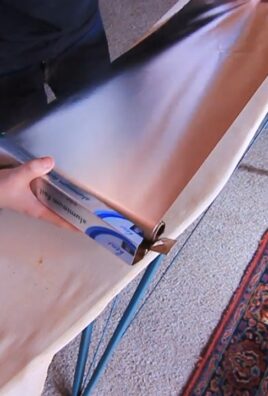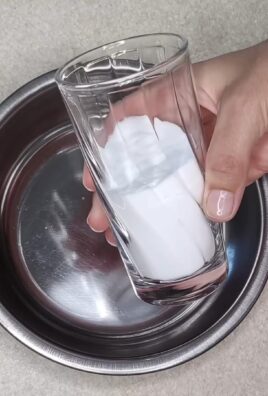DIY repair tricks – ever feel like your home is conspiring against you? A leaky faucet here, a wobbly chair there… it can feel endless! But what if I told you that you could conquer those pesky household problems without breaking the bank or waiting weeks for a handyman?
For centuries, resourceful individuals have relied on their ingenuity to fix and maintain their homes. Think about it – before the age of mass-produced goods and readily available repair services, knowing how to mend and mend was a vital skill, passed down through generations. This tradition of self-reliance is not only practical but also deeply satisfying. There’s a unique sense of accomplishment that comes from tackling a repair yourself and seeing the tangible results of your efforts.
In today’s fast-paced world, it’s easy to fall into the trap of replacing instead of repairing. But with a few clever DIY repair tricks up your sleeve, you can save money, reduce waste, and gain a newfound appreciation for your home. This article is your ultimate guide to simple yet effective DIY fixes that will empower you to tackle common household repairs with confidence. From quick fixes for squeaky doors to clever solutions for damaged walls, I’m going to share my favorite tips and hacks that will transform you into a home repair hero! So, grab your toolbox, and let’s get started!

DIY Magic: Breathe New Life into Your Beloved Jeans!
Hey there, fellow denim devotees! Are your favorite jeans starting to show their age? Don’t despair! Before you toss them in the donation pile, let’s explore some super easy and effective DIY repair tricks that will have them looking (almost) as good as new. I’m talking about patching holes, fixing frayed hems, and even reinforcing weak spots. Get ready to give your jeans a second life!
Patching Up Those Pesky Holes
Holes in jeans are practically a rite of passage, right? But sometimes, they’re just not cute. Here’s how to patch them up like a pro:
What You’ll Need:
* A piece of denim fabric (recycled from old jeans is perfect!)
* Matching thread
* Needle
* Scissors
* Pins
* Iron
* Iron-on adhesive (optional, but recommended for beginners)
* Seam ripper (helpful for salvaging denim from other jeans)
Step-by-Step Instructions:
1. Prepare the Hole: First, turn your jeans inside out. Trim any loose threads around the hole with your scissors. This will give you a clean surface to work with. If the edges are particularly frayed, you can carefully fold them inwards and iron them flat.
2. Cut Your Patch: Now, grab your denim patch fabric. It needs to be larger than the hole, with at least an inch of overlap on all sides. I usually cut a square or rectangle, but you can get creative with shapes if you want!
3. Secure the Patch (Iron-On Method): If you’re using iron-on adhesive, place it between the patch and the inside of your jeans, with the adhesive side facing the denim. Follow the instructions on your adhesive packaging to iron the patch in place. This will give you a secure base for sewing.
4. Secure the Patch (Pinning Method): If you’re skipping the iron-on adhesive, simply position the patch behind the hole, making sure it’s centered. Use pins to secure the patch to the jeans, working your way around the perimeter of the hole. Make sure the pins are perpendicular to the edge of the hole.
5. Thread Your Needle: Cut a length of matching thread (about 18 inches is a good starting point) and thread your needle. Tie a knot at the end of the thread.
6. Start Sewing: Starting from the inside of the jeans, begin sewing around the edge of the hole, attaching the patch to the denim. Use a simple running stitch or a backstitch for extra strength. I prefer a backstitch because it creates a more secure and durable seam.
* Running Stitch: Bring the needle up through the fabric, then down a short distance away. Continue this pattern, creating a line of stitches.
* Backstitch: Bring the needle up through the fabric, then down a short distance behind the point where the thread emerged. Bring the needle up again a short distance in front of the first stitch. This creates a solid line of stitches.
7. Reinforce the Edges: Once you’ve sewn around the entire perimeter of the hole, go back and reinforce the edges of the patch with a second row of stitches. This will help prevent the patch from fraying and coming loose over time.
8. Finishing Up: Tie off the thread on the inside of the jeans, making a secure knot. Trim any excess thread. Turn your jeans right side out and admire your handiwork!
Taming Those Frayed Hems
Frayed hems can give your jeans a cool, distressed look, but sometimes they just look messy. Here’s how to fix them:
What You’ll Need:
* Scissors
* Matching thread
* Needle
* Iron
* Seam ripper (optional, for removing the original hem)
Step-by-Step Instructions:
1. Assess the Damage: Take a good look at your frayed hem. How much fabric needs to be removed? Is the fraying even all the way around?
2. Trim the Fraying: Using your scissors, carefully trim away the frayed edges of the hem. Try to cut in a straight line, following the original hemline as closely as possible. If the fraying is uneven, you may need to trim a bit more from one side than the other.
3. Fold and Iron: Fold the raw edge of the hem inwards, creating a new hemline. The width of the fold will depend on how much fabric you trimmed away. Iron the fold in place to create a crisp, clean line.
4. Sew the Hem: Thread your needle with matching thread and tie a knot at the end. Starting from the inside of the jeans, begin sewing the hem in place. You can use a simple running stitch, a backstitch, or a blind hem stitch.
* Blind Hem Stitch: This stitch is designed to be invisible from the outside of the garment. To do it, take a small stitch in the folded edge of the hem, then a small stitch in the main fabric of the jeans. Continue this pattern, creating a series of small, almost invisible stitches.
5. Reinforce the Hem: For extra durability, you can sew a second row of stitches along the hemline. This will help prevent the hem from fraying again in the future.
6. Finishing Up: Tie off the thread on the inside of the jeans, making a secure knot. Trim any excess thread. Iron the hem one last time to set the stitches.
Reinforcing Weak Spots Before They Break
Prevention is better than cure, right? If you notice any areas on your jeans that are starting to look thin or worn, you can reinforce them before they develop into holes. This is especially useful for areas like the knees, the inner thighs, and the pockets.
What You’ll Need:
* A piece of denim fabric (again, recycled is great!)
* Matching thread
* Needle
* Scissors
* Pins
* Iron-on adhesive (optional)
Step-by-Step Instructions:
1. Identify Weak Spots: Turn your jeans inside out and carefully examine them for any areas that are starting to look thin or worn. These are the areas you’ll want to reinforce.
2. Cut Your Reinforcement Patch: Cut a piece of denim fabric that is slightly larger than the weak spot. The shape of the patch doesn’t really matter, but I usually go for a square or rectangle.
3. Secure the Patch (Iron-On Method): If you’re using iron-on adhesive, place it between the patch and the inside of your jeans, with the adhesive side facing the denim. Follow the instructions on your adhesive packaging to iron the patch in place.
4. Secure the Patch (Pinning Method): If you’re skipping the iron-on adhesive, simply position the patch behind the weak spot, making sure it’s centered. Use pins to secure the patch to the jeans, working your way around the perimeter of the patch.
5. Sew the Patch: Thread your needle with matching thread and tie a knot at the end. Starting from the inside of the jeans, begin sewing around the edge of the patch, attaching it to the denim. Use a simple running stitch or a backstitch.
6. Reinforce the Patch: For extra strength, you can sew several rows of stitches across the patch, creating a grid-like pattern. This will help distribute the stress and prevent the weak spot from tearing.
7. Finishing Up: Tie off the thread on the inside of the jeans, making a secure knot. Trim any excess thread. Turn your jeans right side out and you’ve just added years to their life!
A Note on Thread Color
Choosing the right thread color is crucial for a seamless repair. If you want your repairs to be as invisible as possible, try to match the thread color to the original stitching on your jeans. You can usually find a good match at your local fabric store. If you can’t find an exact match, err on the side of a slightly darker shade.
Embrace the Imperfections!
Remember, these are just guidelines. Don’t be afraid to experiment and get creative with your repairs. Sometimes, the imperfections are what make your jeans unique and special. So, grab your needle and thread, and let’s get to work! Happy mending!

Conclusion
So, there you have it! Mastering these DIY repair tricks isn’t just about saving money; it’s about empowering yourself to tackle everyday challenges with confidence and creativity. We’ve covered some essential techniques that can breathe new life into your belongings and prevent unnecessary waste. From mending torn fabrics with clever patches to reviving scratched furniture with simple polishes, these skills are invaluable for any homeowner or renter.
But why is embracing these DIY repair tricks a must-try? Because in a world of disposable goods, learning to fix things yourself is a radical act of sustainability and self-reliance. It reduces your environmental footprint, keeps perfectly good items out of landfills, and gives you a deep sense of satisfaction. Plus, you’ll be amazed at how much money you can save by avoiding costly replacements or professional repairs.
Consider this: that wobbly chair you were about to toss? A few strategically placed wood shims and some wood glue can make it sturdy again. That favorite sweater with a hole? A decorative patch can transform it into a unique and stylish piece. The possibilities are endless, and the rewards are significant.
Variations and Suggestions:
Don’t be afraid to experiment and personalize these techniques. For fabric repairs, explore different types of patches, embroidery, or even visible mending techniques like sashiko for a unique and artistic touch. When it comes to furniture repair, consider using natural oils and waxes instead of harsh chemicals for a more eco-friendly approach. You can also add your own creative flair by painting, staining, or distressing your repaired items.
For example, if you’re repairing a chipped ceramic mug, you could use food-safe epoxy to fill the chip and then paint over it with ceramic paint to match the original design. Or, if you’re fixing a leaky faucet, you could try using plumber’s tape to seal the threads before replacing the entire faucet.
Remember, the key is to be patient, resourceful, and willing to learn. There are countless online resources, tutorials, and communities dedicated to DIY repair, so don’t hesitate to seek out guidance and inspiration.
A Call to Action:
We strongly encourage you to try these DIY repair tricks and experience the satisfaction of fixing things yourself. Start with a small, manageable project and gradually work your way up to more complex repairs. Don’t be discouraged if you make mistakes along the way – that’s part of the learning process.
Most importantly, share your experiences with us! We’d love to hear about your successful repairs, your creative variations, and any challenges you encountered. Post photos of your projects on social media using the hashtag #DIYRepairTricks, or leave a comment below to share your tips and insights with the community. Together, we can empower each other to embrace a more sustainable and self-sufficient lifestyle. Let’s start fixing things and making a difference, one repair at a time!
Frequently Asked Questions (FAQ)
What are the most common household items I can repair myself?
Many common household items are surprisingly easy to repair with a few basic tools and some patience. These include:
* **Clothing:** Tears, holes, and loose buttons can be easily mended with basic sewing skills or iron-on patches.
* **Furniture:** Wobbly chairs, scratched surfaces, and loose joints can often be fixed with wood glue, shims, and furniture polish.
* **Small Appliances:** Simple issues like clogged coffee makers or loose cords on lamps can often be resolved with cleaning or minor repairs.
* **Plumbing:** Leaky faucets and clogged drains can sometimes be fixed with plumber’s tape, plungers, or drain snakes.
* **Electronics:** While more complex, some basic electronic repairs like replacing batteries or fixing loose connections can be done with caution.
What are the essential tools I need for basic DIY repairs?
A well-stocked toolkit is essential for tackling DIY repairs. Here are some must-have tools:
* **Screwdrivers:** A variety of sizes and types (Phillips head, flathead) are essential.
* **Pliers:** Needle-nose pliers, slip-joint pliers, and wire cutters are useful for various tasks.
* **Wrench:** An adjustable wrench is versatile for tightening and loosening nuts and bolts.
* **Hammer:** A standard claw hammer is essential for driving nails and other tasks.
* **Measuring Tape:** For accurate measurements.
* **Utility Knife:** For cutting various materials.
* **Sandpaper:** For smoothing surfaces.
* **Wood Glue:** For repairing furniture and other wooden items.
* **Plumber’s Tape:** For sealing plumbing connections.
* **Sewing Kit:** For mending clothing and other fabrics.
* **Safety Glasses:** To protect your eyes from debris.
* **Work Gloves:** To protect your hands.
Where can I find reliable information and tutorials for DIY repairs?
The internet is a treasure trove of information for DIY repairs. Here are some reliable resources:
* **YouTube:** Many channels offer step-by-step video tutorials on various repair projects.
* **DIY Blogs and Websites:** Numerous websites are dedicated to DIY projects, including repair guides and tips.
* **Online Forums and Communities:** Online forums and communities allow you to ask questions and get advice from experienced DIYers.
* **Local Libraries:** Libraries often have books and resources on home repair and maintenance.
* **Hardware Stores:** Many hardware stores offer workshops and demonstrations on basic repair techniques.
How can I ensure my safety when performing DIY repairs?
Safety should always be your top priority when performing DIY repairs. Here are some essential safety tips:
* **Wear Safety Glasses:** Protect your eyes from flying debris.
* **Wear Work Gloves:** Protect your hands from cuts and abrasions.
* **Disconnect Power:** Always disconnect power to electrical appliances before attempting repairs.
* **Turn Off Water:** Turn off the water supply before working on plumbing repairs.
* **Read Instructions:** Carefully read and follow the instructions for any tools or materials you are using.
* **Work in a Well-Ventilated Area:** When using chemicals or adhesives, work in a well-ventilated area to avoid inhaling harmful fumes.
* **Know Your Limits:** Don’t attempt repairs that are beyond your skill level. If you’re unsure, consult a professional.
* **Keep a First-Aid Kit Handy:** Be prepared for minor injuries.
What should I do if I encounter a repair that is beyond my skill level?
It’s important to recognize your limitations and know when to call in a professional. If you encounter a repair that is complex, dangerous, or requires specialized knowledge or tools, it’s best to consult a qualified professional. This could include a plumber, electrician, carpenter, or appliance repair technician. Attempting to fix something beyond your skill level could result in further damage, injury, or even pose a safety hazard.
How can I make my repairs more sustainable and eco-friendly?
There are several ways to make your repairs more sustainable and eco-friendly:
* **Use Recycled or Upcycled Materials:** Look for opportunities to use recycled or upcycled materials in your repairs.
* **Choose Eco-Friendly Products:** Opt for natural and non-toxic cleaning products, adhesives, and finishes.
* **Repair Instead of Replacing:** Extend the life of your belongings by repairing them instead of replacing them.
* **Donate or Recycle Unwanted Items:** If an item is beyond repair, donate it to a charity or recycle it properly.
* **Learn About Sustainable Repair Techniques:** Research and learn about sustainable repair techniques, such as natural dyeing, visible mending, and eco-friendly furniture refinishing.




Leave a Comment